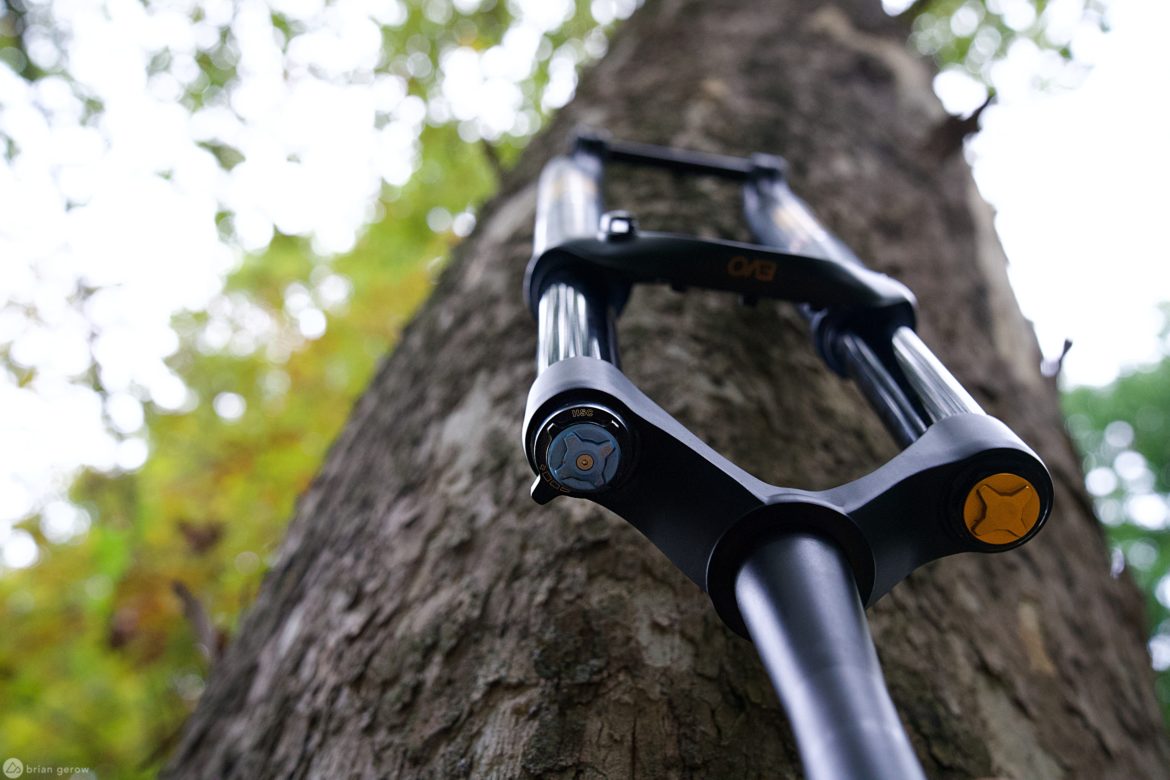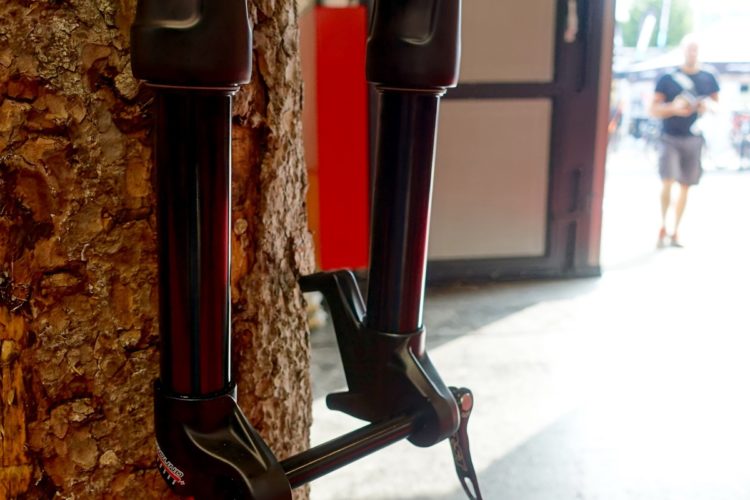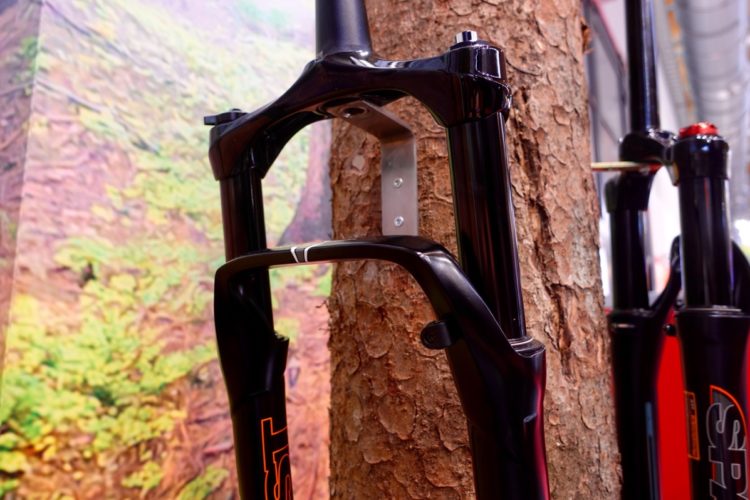
With all of the colorful knobs, bits, and bobs on modern MTB suspension components, there is a lot to learn. I recently chatted with a suspension technician from Fox about the most common suspension misconceptions he hears from customers and fellow riders. I will try to keep these descriptions as rudimentary as possible, to best suit folks who studied arts and social sciences, like myself. Let’s get into it.
Static sag
Most folks have an idea of how to set their sag but don’t have a clear understanding of what sag is or why it’s important. Static sag is the amount that your suspension compresses under your weight, with riding gear, while sitting still on the bike. It sets the base level for the air or coil spring pressure in your fork or shock. Once set, it can be adjusted to better suit your evolving riding style, weather conditions, or unique trail characteristics.
If the air pressure or coil spring-rate is too high your suspension can feel harsh and unresponsive, resulting in poor traction and a rough ride. If the spring-rate is too low the suspension will not properly support your mass and will remain low in the travel over successive impacts (often called packing), which also results in a harsh ride sensation.
No matter how much you want to “set it and forget it” sag needs to be checked occasionally. Your fork and shock can slowly lose air over time, and your riding style and body position may change throughout the season. Additionally, as your skills advance, and you start riding faster and hitting bigger trail features, you will likely need to adjust the amount of pressure your coil or air spring provides.
As a broad rule, the faster and harder you ride, the harder your suspension will need to be to resist and recover from impacts. For example, if you push on the front of any professional gravity racer’s bike the fork will feel like it’s fully locked out. This is because those riders are hitting obstacles and jumps with great force, requiring great resistance. Conversely, newer riders are often advised to keep their suspension as supple and plush as it can be to absorb every last bump while they improve their skills and strength. The sag on a beginner’s bike will often hang closer to the 30-35% range, though those numbers also depend on suspension kinematics and how the individual rider wants their bike to feel on the trail.
For coil shock and fork owners, changing that level of resistance requires adding or reducing compression, or swapping the spring for one with a more appropriate spring-rate.
Preload
Relating to sag and spring-rates, a lot of riders have the idea that they can add preload to their coil shocks and forks to adjust the sag. That’s not what preload does. The preload adjustment changes the amount of pressure that’s required to initiate the spring’s movement by making the spring push with more or less force against the shock body. It does not change the amount of force required to move the spring through its travel once it’s in motion. Preloading the spring too much (beyond 2mm) will cancel out some of the coil’s supple small bump qualities, and in the case of a rear shock, it will raise the back of the bike slightly — altering the geometry. If you’ve dialed in all of the compression you want, and you find yourself desiring more support or resistance from your coil suspension component, you’ll need to swap the coil.
Coil spring rate
When you buy a coil-equipped bike from a shop it is most often set up for a rider weight of between 75 and 80kg (165-175lbs). If you are lighter or heavier than that base setup, or your riding style has you bottoming out or barely using the spring that was rated for your weight, again you will need to swap the spring. Some riders may fall between spring-rates for their given shock and will need to purchase aftermarket springs that cover more precise increments of resistance. Coil shocks are simple to use, require less frequent adjustments and service than air shocks, and function more consistently on long descents. But finding the right initial spring rate can take some time.

Basic settings: High and low-speed compression and rebound
A good number of riders operate under the notion that high-speed compression deals with things you hit while going fast, while low-speed takes care of the slower slammed bumps. In truth, neither of those understandings is accurate. First off, compression refers to the amount of resistance that’s applied to a fork or shock by its damper cartridge as the component is receiving impact, or compressing.
The high-speed compression knob adjusts the amount of resistance your suspension component applies while compressing due to larger hits like jumps, drops, and larger roots or rocks. Low-speed compression controls are there to adjust how the fork resists shifts in your body weight while you move on the bike, hit the brakes, and while encountering smaller impacts like rollers, berms, and trail chatter. Give our full beginner’s guide to dampers a read for additional info.
The rebound knob/s adjust the amount of resistance your damper cartridge provides while the fork or shock is extending or returning from an impact. Check out our basic guide to rebound settings for more info.
Over-forking
So you bought a sweet 140mm bike, and six days later the brand updated the frame design around a 160mm fork. FOMO! Can you just increase your front travel by 20mm? The short answer is yes. It’s your bike, and you can do whatever you want with it, including sawing it into bits and gluing them back together artistically to see what you get. That said, there are some things to consider.
Think of your frame as a triangle. As you increase the length of your bike’s fork the bottom bracket height will raise with respect to the height of the hubs, resulting in a less stable and potentially awkward feeling ride. This is often the most notable result of mounting a fork that’s longer than a frame was designed for, as BB-drop is a key component of handling characteristics. Next, the bike’s reach will effectively shorten, as the front point of the frame triangle moves up and rearward. Depending on the size of your bike, and how much you are increasing the fork travel, this could be a good or bad aspect of over-forking. Finally, your handlebars will be elevated, and you will need to weight the front tire differently to maintain adequate traction. You may be able to move spacers around or use a handlebar with less rise to sort out this discrepancy.

What would you add? Have you experienced any mountain bike suspension assumptions that were incorrect?



















